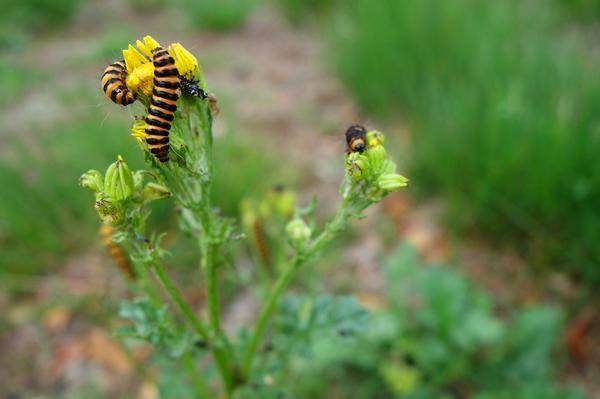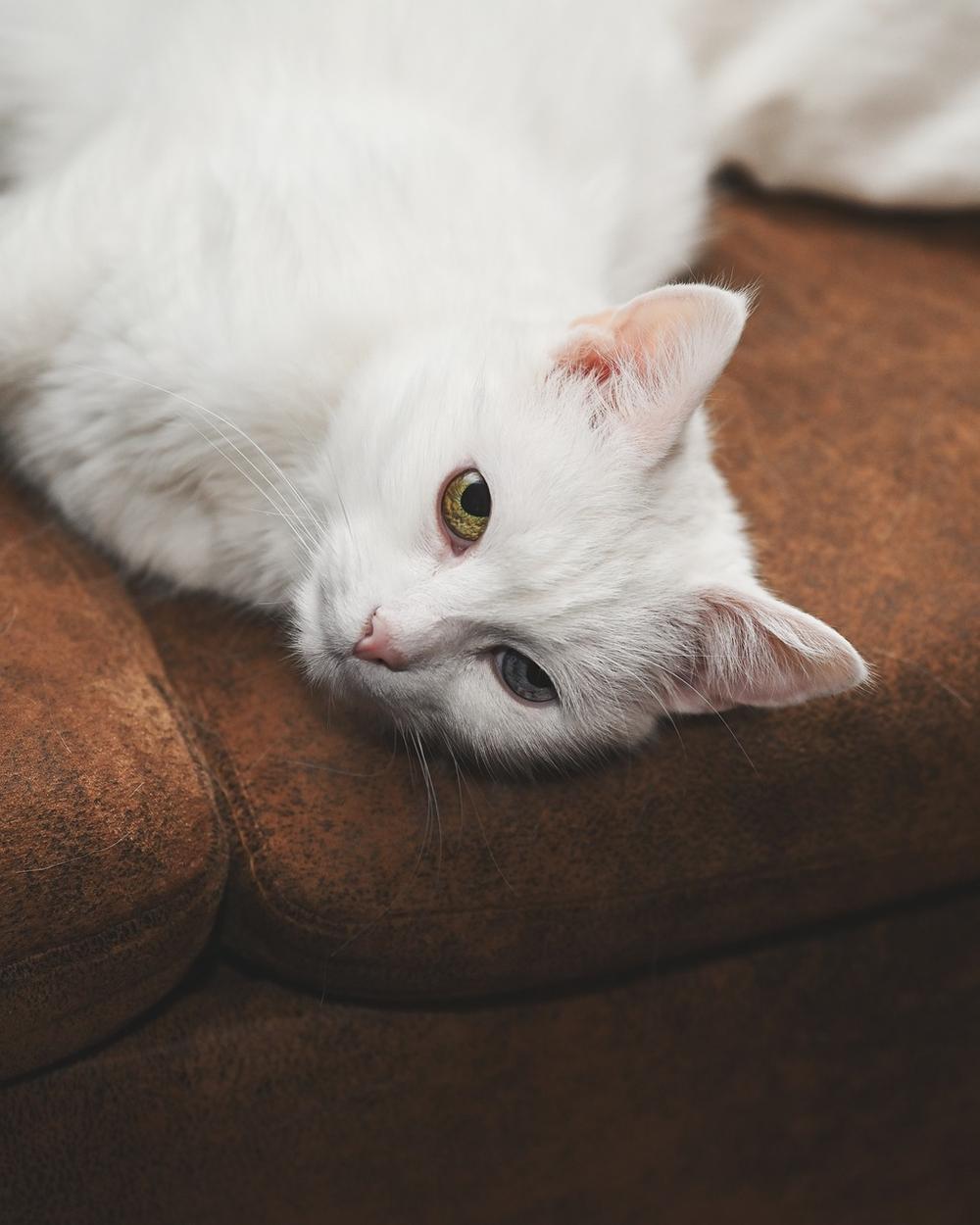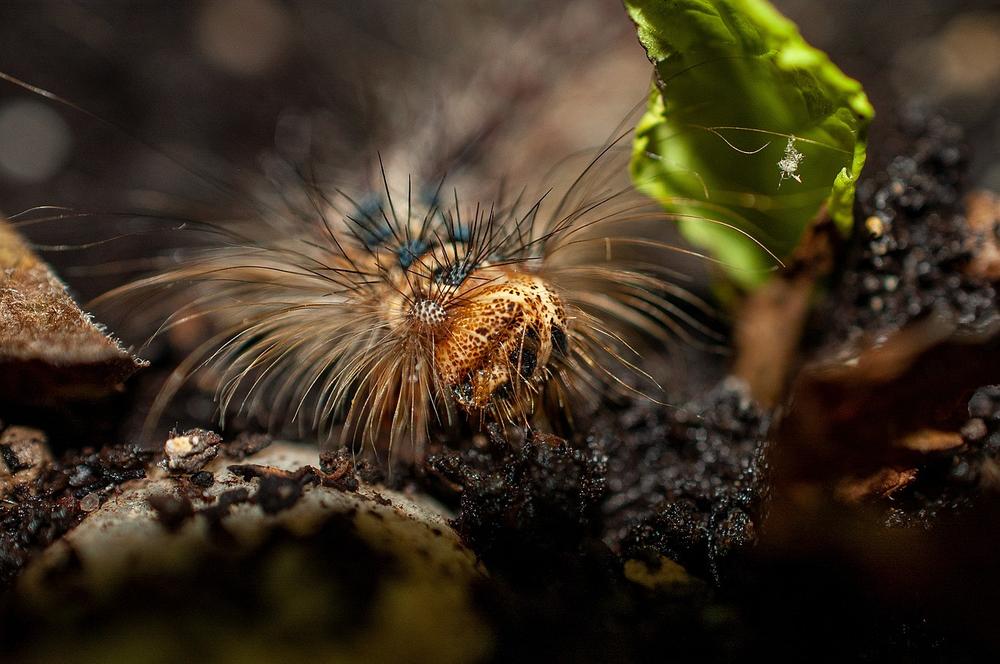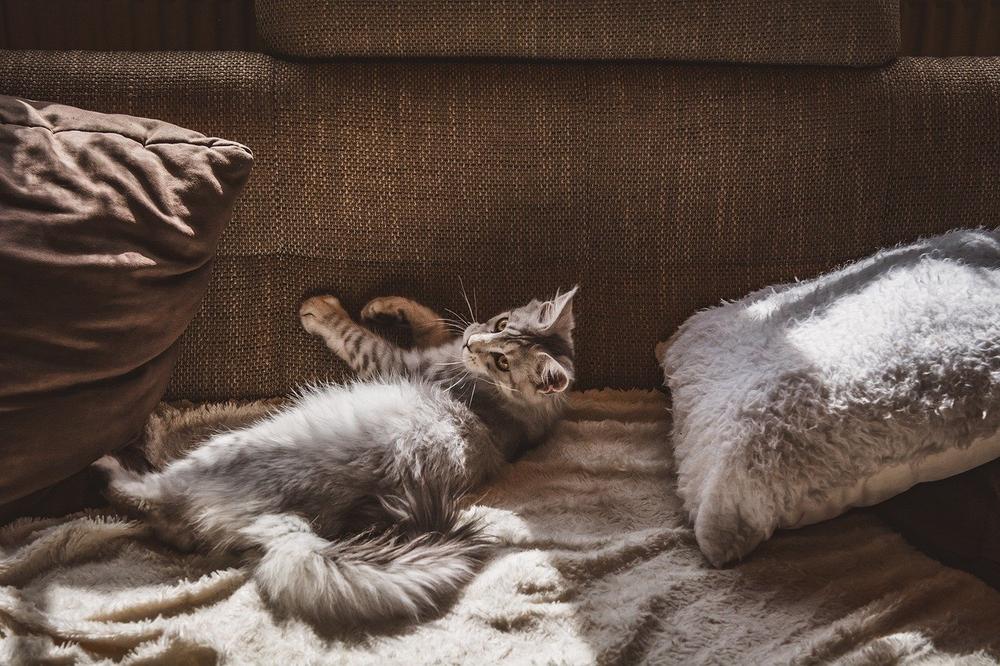Do Cats Eat Caterpillars?

Just imagine:
You find your cat nose-deep in the backyard, eyeing a plump caterpillar.
Panic sets in. Could your beloved feline be in danger? 😱
We understand your concern.
Let's dive into the fascinating world of feline nutrition and discover if cats can munch on caterpillars.
Can Cats Eat Butterflies?
Butterflies aren't a good source of nutrition for cats, you know.
Listen up, I know how much cats love to hunt and chase things.
And those delicate and graceful butterflies might seem like tempting prey.
But here's the thing:
Relying on butterflies as their main food isn't the way to go for our feline friends.
You see, butterflies don't really offer the nutritional value your cat needs.
They may be beautiful, but they lack what it takes to keep your furry friend healthy and satisfied.
So if you were considering throwing a butterfly or two into your cat's food bowl, maybe rethink that idea.
Some butterflies can actually be toxic to cats, did you know?
Now pay close attention because this is important information.
Not all butterflies are created equal.
In fact, certain species like the famous Monarch butterflies can actually be toxic for your cat.
Yes, you got that right.
That stunning orange and black butterfly has a little secret—it can cause serious tummy troubles for your beloved furball.

So just because a butterfly looks pretty, it doesn't mean it's safe for your cat to munch on.
Keep those fluttery creatures far away from your kitty's mouth!
Hunting butterflies can have unintended consequences, believe me.
I totally understand—cats have an innate hunting instinct, it's part of who they are.
However, before you set your kitty loose on a butterfly-catching adventure, there are a few things you should consider.
First off, some butterfly species are protected. This means hunting them not only harms them but also brings potential legal trouble your way.
And let's face it, nobody wants that kind of hassle, right?
Secondly, letting your cat roam freely outdoors for butterfly hunts puts them at risk of injury or getting lost.
We want our furry buddies to stay safe and sound, so it's best to provide indoor stimulation for their hunting urges instead.
With that being said, keep your cats entertained indoors with plenty of toys, interactive playtime, and maybe even a laser pointer (they absolutely adore those!). Trust me, it's a much safer option for all parties involved.
And one more thing, if you're wondering about another important topic in feline nutrition, I've got you covered.
Have you ever thought about whether cats can safely eat jelly? Well, guess what? In my blog post, Can Cats Eat Jelly, I dive deep into this subject to address your curiosity and concerns.
So, if you want to find out if jelly is a safe treat for your furry friend or if it can have any toxic effects, make sure to check out my guide.
I promise you'll gain valuable insights to keep your beloved cat healthy and happy.
Can Caterpillars Make Cats Sick or Poisonous?
Some caterpillars are harmful to cats, as they feed on toxic plants and have stinging hairs filled with poison. Butterflies like Monarchs and Plain Tigers also store toxins in their bodies. If a cat consumes these caterpillars or butterflies, it can experience vomiting, diarrhea, difficulty walking, and seizures.
Can cats eat caterpillars?
Are caterpillars poisonous to cats?
Let's talk about it.
You might be wondering if it's safe for your cat to munch on a caterpillar. Well, most of the time, it is.
But there are exceptions.
See, while many caterpillars won't harm your feline friend, there are a few troublemakers out there that can cause serious issues if eaten.
Cats have this habit of coming across caterpillars while they're exploring or playing around. You know how curious and mischievous they can be.
Keeping your cat away from these potentially harmful creatures isn't easy though.
They seem to find a way, no matter what we do.
But don't worry... There are a couple of things you can try. Firstly, during caterpillar season, limit your furry pal's access to the garden. It might help reduce the chances of any unwanted encounters.
Another option, which works well, is simply keeping your cat indoors when caterpillars are more common around your area.
This way, they're less likely to stumble upon those pesky critters.
Now, here comes the interesting part.
Some caterpillars feed on toxic plants and have little stinging hairs filled with poison. Luckily, our cats don't need any anti-stinger lotion like we do!
These caterpillars can be pretty harmful to predators like cats.

Take the flannel moth caterpillar, saddleback moth caterpillar, stinging rose caterpillar, or IO moth caterpillar as examples.
Nasty stuff, right?
But hold on, there's even more to this story.
Did you know that some butterflies themselves consume poisonous plants?
Yes, it's true!
Take the Monarch and Plain Tiger butterflies, for instance.
They store those toxins in their bodies. So, if your cat decides to take a bite (which I highly advise against), it can experience some serious symptoms.
Vomiting, diarrhea, difficulty walking, drooling - it's a pretty scary scenario.
In severe cases, your cat might even have seizures.
Yikes!
If you notice any worrying signs in your cat after an encounter with caterpillars, I urge you to reach out to a vet as soon as possible.
They are the best people to guide you on what to do next and provide any necessary treatment.
Let's keep our beloved cats safe from these sneaky little creatures, shall we?
Stay vigilant, my friends!
But wait, did you know that some caterpillars feed on toxic plants and can cause harm to your feline friend?
Let's dive deeper into the specific dangers of caterpillar consumption by cats and explore the effects of Monarch caterpillars feeding on the toxic milkweed plant.
Trust me, you'll want to learn more about this curious connection:
Do Cats Eat Monarch Caterpillars?
Feeding on the toxic milkweed plant is a normal diet for the monarch caterpillar.
You have to note that cats should avoid eating this plant due to potential adverse reactions it can cause.
You may be wondering why the monarch caterpillars can consume this toxic plant without any harm, but cats cannot. The answer lies in evolution - monarch caterpillars have developed a unique defense mechanism that allows them to process and store the toxins from milkweed, making them poisonous to predators. However, this adaptation doesn't apply to our feline friends, so keep an eye out and ensure their safety by keeping them away from milkweed plants.
Caterpillars' Potential to Bite Cats
Here are 10 things you should consider to determine if caterpillars are a risk to cats:
- Most garden caterpillars don't usually bite cats that much.
- Spiny and hairy caterpillars have their own defenses against predators.
- Exotic caterpillar species might pose more serious threats to cats.
- Caterpillars don't have teeth or fangs, so they generally don't cause severe bites.
- Cats could feel irritated, sick, or in pain if bitten by a caterpillar.
- A cat's fur can offer some protection against caterpillar bites.
- If a caterpillar has bright colors, hair, fur, or spikes, it could be potentially dangerous for your cat.
- While caterpillars may bite when threatened, the common ones in gardens are unlikely to bite cats.
- Hairy caterpillars can also irritate human skin, causing localized dermatitis.
- You can remove caterpillar hairs from your skin with tape if needed, and if symptoms persist, consult an ophthalmologist.
Make sure you prioritize your cat's safety and bear in mind the potential risks that caterpillars may pose. 😺

But what about caterpillars that can sting?
Can they really harm your furry friend?
Let me tell you, there are some caterpillar species out there that pose a serious threat to cats...
Caterpillars and Their Sting on Cats
| Can Cats Eat Caterpillars? | Are Caterpillars Poisonous to Cats? |
|---|---|
| Yes, but with caution. Some caterpillars can sting cats, causing discomfort, allergic reactions, and potential harm. It is best to research the specific species of caterpillar before allowing your cat to come into contact with them. | While not all caterpillars are poisonous to cats, certain species, like the Io moth and saddleback caterpillars, can be toxic if ingested. These toxic caterpillars may cause symptoms such as vomiting, diarrhea, drooling, lethargy, and even more severe reactions in some cases. It's important to keep your cat away from caterpillars that are brightly colored or have spiky hairs, as they are more likely to be toxic. |
You may be wondering, do caterpillars sting cats?
Well, here's some handy information for you.
Certain caterpillar species can indeed sting cats, especially if they feel threatened.
Two examples of caterpillars that you should be particularly cautious of are the Io moth and saddleback caterpillars.
These little critters pack a punch when it comes to stinging power, especially for sensitive cats. So, you'll want to keep an eye out for them.
Caterpillars that have stingers or poison-tipped hairs can cause discomfort, swelling, and even internal damage in cats.
And since our feline friends tend to be naturally curious, they might end up playing with or biting these caterpillars.
If your cat does get stung, don't panic.
You can try using tweezers or gloves to remove any stingers or hair from their fur.

Afterwards, soothing the affected areas with cool water can help ease the pain.
Now, not all caterpillars have stingers.
Some sport spines instead, which release toxins of varying strengths.
If your cat shows signs of inflammation or illness after encountering one of these caterpillars, you ought to seek veterinary assistance right away.
It's also worth noting that caterpillars have two types of hair: urticating and stinging.
These hairs can cause rashes, itching, redness, and swelling if they come into contact with your cat's skin.
While less common, caterpillars can also accidentally come into contact with your cat's eyes.
If this happens, make sure to thoroughly flush their eyes during treatment.
So, if you want to keep your feline companion safe, it's best to avoid caterpillars that are known to sting or have toxic hairs. Keep an eye out for any caterpillars lurking around and take preventative measures to protect your precious kitty.
And while caterpillars can pose a risk to cats, you should remember that there are other potential dangers and considerations when it comes to keeping your feline friend safe...
What Other Bugs Are Harmful to Cats?
There are bugs that can hurt your cat, not just butterflies and caterpillars.
Mosquitoes are one example because they can give them dangerous diseases like heartworm.
You need to protect your furry friend from mosquitos.
Another thing that can harm cats is Buck moth caterpillars, which are poisonous.

If a cat eats these caterpillars, they might have symptoms like drooling, throwing up, or having the runs, but those usually go away on their own. To keep cats away from potted plants or gardens where there might be caterpillars, you can use things like spices, chili, or citrus fruits as safe ways to deter them.
But remember, while caterpillars are gross, there are scarier bugs like mosquitos and cockroaches that are a bigger threat to both cats and people.
You should know that these toxic caterpillars are rare and not found a lot in places where people live.
Also, when domestic cats roam freely outside, it can hurt biodiversity and they can hunt native animals.
To stop them from hunting too much when they are outside, it helps if you give them things to do at home, like playing and using food puzzles for mental stimulation.
Summing it up
Key Takeaways:
- Monarch butterflies and milkweed plants are poisonous to animals.
- Cats can eat butterflies, but they don't provide significant nutrition.
- Hunting butterflies can harm protected species, so provide indoor stimulation for cats.
- Cats may eat and swallow caterpillars while hunting or playing.
- Restricting a cat's access to the garden or keeping them indoors can prevent ingestion.
- Some caterpillars consume poisonous plants and can be harmful to cats.
- Toxic caterpillars can cause symptoms like vomiting, diarrhea, and seizures in cats.
- Treatment for caterpillar exposure in cats is symptomatic and requires veterinary consultation.
- Caterpillars with spines and hairs can harm cats, but their bites are usually not a concern.
- Hairy caterpillars can cause irritation to human skin, and their hairs can be removed with tape.
- Some caterpillars can sting cats, causing pain, swelling, and internal damage.
- Poisonous caterpillars possess stings and poison-tipped hairs that can harm cats.
- If a cat is stung by a caterpillar, remove the stings and seek veterinary assistance.
- Caterpillars can cause rashes, pain, and itching upon dermal exposure.
- Buck moth caterpillars are toxic and can cause drooling, vomiting, and diarrhea in cats.
And that wraps up today's article.
If you wish to read more of my useful articles, I recommend you check out some of these: Do Cats Eat Ants, Can Cats Eat Spaghetti, Can Cats Eat Popcorn, Can Cats Eat Wasabi, and Can Cats Eat Poppy Seeds
Talk soon,
-Sarah Davis